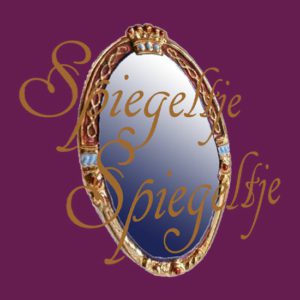The Making of Textual Culture: ‘Grammatica’ and Literary Theory, 350-1100 by Martin Irvine*
Cambridge Studies in Medieval Literature, Series Number 19, Cambridge University Press 1994, pp. 604
*Review in Amazon.com, July 22, 2009 Amazon.com.
In: Boekbesprekingen
A facelift for the Middle Ages. Martin Irvine’s The Making of Textual Culture: scholarship or propaganda?
Martin Irvine wrote a well documented, thoroughly composed and accessible but somewhat prolix study about the role of grammar in the early Middle Ages. Theories about textinterpretation, the use of allegory, gloss and compilation are treated in great length. Irvine uses as a guideline for his argumentation the classical division in the teaching phases of grammar, which is both original and highly functional.
Questionable though is Irvine’s excluding of critical Christian sources with a negative attitude towards pagan poetry, the main literary source for studying grammar. Taken as a whole the book is set up as if Irvine, as a founding director of a Jesuit college, wants to smooth out the wrinkles on the face of medieval Christianity. In my Clio’s kerstening (diss., Budel 2005) or ‘The Christianization of Clio’ I just did the opposite. For my research on the diminishing role of literature in western education since Antiquity – in spite of era’s of renaissance – I concentrated much more on ‘the wrinkles’. If Irvine would have treated the next set of books and passages with the same thoroughness as he treated those of his preference, he might have come to less optimistic conclusions: Clement of Alexandria: Protreptikos pros Ellenas, Tertullian: De idololatria, Anonymus: Didascalia Apostolorum, Augustine: Soliloquia, De magistro, Confessiones 1, 13-16, De doctrina christiana 2, 25, Gregory the Great (here we find the one and only place in the book where the conflict with the classics, “a battle over and for texts”, is elaborated, in short length though): letters to bishops, Alcuin: idem, Isidore of Seville: Sententiae.
Let’s take the extensive section on Alcuin as an example. Augustine’s De doctrina christiana serves as Alcuin’s “model of education”, as Irvine states correctly. Consequently Alcuin’s division of grammatica in twenty-six (!) species ends and not starts with “fables, histories”. Although a revolution is taking place here in the classical esteem of fable, poetry and history, on which all didactical techniques are based that Irvine uses as his guideline, no mention whatsoever is made of it. And although the literary model is swept away out of the fundamentals of grammar teaching by one of the main actors in that field in the Middle Ages, the reader’s eyes are blinded for this major development.
In short, Irvine could not have given his book the triumphant title he gave it, if he would have taken into account the criticism in many of his secondary sources (for instance, Erich Auerbach’s criticism in his Literary Language on the decay of Latin – “sermo humilis”- to be demonstrated by Gregory of Tour’s Histories), the amount of schools, books, libraries, students, teachers, let go literary masterpieces and standarded centers of intellectual activity, that could have taken care of his “making of textual culture”.
He writes (p. 20): “[G]rammatica was never merely an abstract discipline, […] studied in isolation from social ends, but functioned in support of social institutions on a grand scale – courts, cathedral and monastic communities, schools, libraries and scriptoria; in short, the major centres of institutional power”. When it comes to libraries and books (Ch. 8) though, numbers, let go comparisons with those in Antiquity, are out of sight.
I’m afraid Christianity is not served the better way by making her a friend of literature by all means. To find the balance seems to me of much importance on this point.
